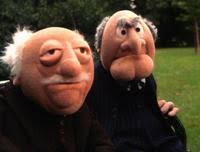“The first most precious thing in life is food in your mouth.” Rowan Atkinson has visited the local food bank I volunteer at regularly over the entire period of the Covid-19 pandemic (where visits have increased tenfold in the last two years). He brings massive amounts of tinned fish which is exactly the luxury our customers ask for first, tuna runs out so quick I’ve seen people queue for hours in the mornings to get some. He never stays around to shake hands or give some self assured speech or anything despite how everyone comes out to see him – he just passes us a few big Sainsburys bags full of tuna and fresh vegetables then drives off. A real man is defined not by his words but by his deeds. – Joel Dixton
Time to Throw away the Old Coates?
“You have to understand how important these events are for small countries that are isolated. It was wonderful to have all those people and be the centre of the world. Events make them important and the focal point as they think they should be.” Quote from NYT.
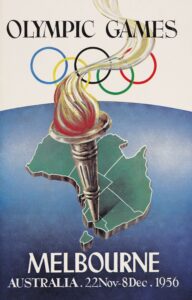 As I schoolboy I went to the Olympic Games in 1956. I was sports mad and there I was, in the queue 18 months before, on the day ticket sales opened. I am there staring at the camera when I was snapped by the National Geographic magazine photographer just after I had purchased my tickets. The most expensive tickets for the opening ceremony cost six guineas, but none of these were on sale for the “unwashed” even on the opening day. After alI, I was not very far back in the queue which snaked up Lonsdale Street away from the retail store Myers.
As I schoolboy I went to the Olympic Games in 1956. I was sports mad and there I was, in the queue 18 months before, on the day ticket sales opened. I am there staring at the camera when I was snapped by the National Geographic magazine photographer just after I had purchased my tickets. The most expensive tickets for the opening ceremony cost six guineas, but none of these were on sale for the “unwashed” even on the opening day. After alI, I was not very far back in the queue which snaked up Lonsdale Street away from the retail store Myers.
I was able to buy tickets for the opening ceremony costing three guineas, and then there were tickets for one guinea. All very quaint, but I had the sum of 100 pounds which had come from cashing out an insurance policy my grandmother had taken out when I was born. I bought a variety of tickets, including the closing ceremony as well.
Sydney was somewhat different. Some time after Sydney was awarded the 2000 Games in 1993, my mate and I each bought two of initial ticket packages, which included the opening ceremony, for about $3,700 each. We could pay in instalments, and by far the most expensive component was the opening ceremony. That was $1,500 a ticket. The opening ceremony was a spectacle, and it is easy to dissect and criticise, but you remember some of the gloss and then the interminable parade of each country’s fashion sense as the nations marched by. The highlight for me was being included in the Torch relay, courtesy of Ansett Airlines. I had my gig in Nowra, kept the torch and, for eternity, stare out of the pages of the Illawarra Mercury.
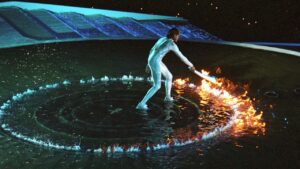
On both occasions, I was very enthusiastic about the Games. Here was a time to be recognised on the world stage. No matter that the 1956 Games were nearly victim to Australian mismanagement led by the fumbling fascist war hero, Wilfrid Kent Hughes, bumbling away with the irascible American IOC chairman, Avery Brundage, an admirer of Hitler, knowledge of which was airbrushed away by 1956. Then, before the Games, inconveniently came the Suez crisis and the aborted Hungarian uprising, which resulted in a smaller Games than in Helsinki four years earlier. The Dutch inter alia did not come to Australia, and Australian quarantine regulations meant the equestrian events were held in Sweden. However, all this was lost on this 16 year old called me.
Those games were not then mired by the systemic cheating initiated by the Eastern bloc which, in 1976, led to Australia winning no gold medals, the first games at which this had occurred since Berlin in 1936. As the Australian finalist in the women’s 400 metres final commented, she was the only runner without a moustache.
There were the riots in Mexico City in 1968, the murder of the Israeli athlete hostages of Munich in 1972, the Moscow Games boycott because of the Soviet invasion of Afghanistan in 1980. One could hear the death rattle, with the IOC under the Irish peer, Lord Killanin, only to be rescued by the American Peter Ueberroth, who made a profit on the Olympic Games in 1984. He injected an element of humanity, whether cynical on not, in encouraging the incorporation of the Paralympics into the main schedule, to ensure that from 1988 they were held in the same city as the main games. The Paralympics had arisen from the Stoke Mandeville project in England and the first was organised in Rome in 1960, but not under the Olympic movement banner.
Somehow, despite the stench of doping and of a privileged and corrupt IOC, the Games have survived, but the death rattle can be heard again in the Tokyo Games. The Games are no longer a diadem, and Brisbane has been bullied and cajoled by one man to take on the financial burden. Can the fact get into the heads of our politicians as they grasp at the straws of our disintegrating country that nobody is really interested in taking on a massive debt, except Queensland (with, of course, the Federal Government picking up 50 per cent of the cost on behalf of the Australian tax payer)?
Australia just does not need the IOC pied pipers to allure the children of now to the Bananabender Boondoggle called “Brissie”.
Yes, I was one who marvelled at the exploits of Ralph Doubell while the smell of tear gas drifted over the Mexico City stadium and when Shane Gould was our swimming heroine and angry when Raelene Boyle was cheated out of greatness by an East German doped so much it precipitated her early death; all the while terrorists were killing 11 athletes in the Munich athletes’ village.
Sure, the magnificent swims by Ariarne Titmus and efforts of Jess Fox provide a short term boost in national pride. They are exceptional athletes. There is no doubt that the exploits of our current Olympians feed the traditional image of a sporting nation and temporary jubilation from a nation imprisoned by a Virus. But what of 2032?
Ueberroth provided a false dawn by providing a model of running the Games profitably. He stated a clear objective; he ruthlessly pared costs, re-used venues, and achieved a profit measurable in real money. Following that, the World has had a series of Games “striving to be declared the best ever”, increasing the number of sports, some of which border on theatre and judged by subjective opinion rather than the objectivity of being “first past the post”. Along the way there have been burgeoning TV rights – until somebody may stop the carousel to do the numbers. The IOC and the successful cities in his aftermath had forgotten Ueberroth.
The local press is celebrating Brisbane for being chosen in 2032 with Coates, as the driving force, being forgiven for his boorish behaviour. In the cold light of tomorrow, Australia may realise how it has been hoodwinked by Coates, there was no other city interested apart from his adopted hometown. Nobody else wants it. It is too expensive for dubious gains.
Coates yet has rescued the IOC, saving them from going cap in hand to some other city to strike a deal. Instead Australia, which will be coping under the economic and social cost of the COVID-19 pandemic for decades to come, has been conned into more debt. Sure, the athletes will come, and the quote from the NYT at the head of this article will ring all so true as our Clutch of politicians will bask in the sunlight of praise until, after two weeks in 2032, the light is turned off leaving the Clutch in darkness, and in debt.
I suggest that failing the employment of a latter-day Ueberroth, Queensland do a poll to determine the level of sponsor interest. It is noteworthy that the AFR was gushing in its Editorial about Brisbane’s win. Are they the same writers who, just a couple of weeks ago, advocated that Sydney not go into lockdown to halt the spread of the Virus?
Enough said?
Well, not quite. Remember in 2003 when the NYT ran an article on the financial aftermath of the Sydney Olympic Games. This quote is salutary:
For a party that lasted only 16 days, the Games carried a big bill. In a 2002 report, the New South Wales auditor general put the Games’ cost at 6.484 billion Australian dollars, or about $4.77 billion, of which 2.037 billion Australian dollars came from the government. The report cautiously accepts estimates by the government of New South Wales that the Games generated 653 million Australian dollars in additional tax revenues from visitors, but even that figure leaves a loss of 1.326 billion Australian dollars.
All the extra costs of the Games were paid for from the budget, meaning they did not leave much of a fiscal hangover. (Unlike the Montreal Games where the 1976 Olympic Games billion dollar debt was not finally extinguished until 2006.)
“A lot of our planning was very extravagant,” Richard Cashman (then a UNSW academic) said. “There was a decline in the health and education budgets in the years before the Games.”
The value to the Sydney after the Games has been minuscular – loaded with unusable infrastructure – stadia that are dismantled or provide a haven for weeds. Cycle paths through a wasteland are not a big deal. Such disasters writ large in both Athens and Brazil. All the while the IOC provides the world with specimens such as John Coates, immersed in formalin jars of the past.
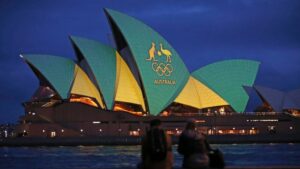
By 2032, an Australia Olympics may find itself drowned by a Viral debt, rising seas and irrelevance, through a lack of sponsors and tourist attractions dying from global warming. I believe this is not too much a dystopian view given what’s happening, looking around the world and seeing the ecological disaster being played out well beyond the horizons of this current euphoria.
Remembering Cuba
Cuba was what we expected.
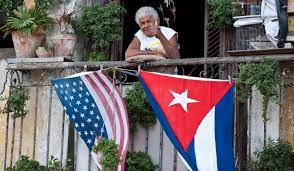
Now we went to Cuba as members of an American delegation. I suppose that was somewhat unusual, having been invited by the leader of the group of health care professionals, Dr Bill Jessee, to join the delegation. It was an easier time then when Obama had loosened the restrictions, and relatively easy to get to Havana. After all it is only 370 kms from Miami with a flight time of one hour. The plane we flew in was not marked but on returning it was clearly a Delta flight. In the flight magazine Havana was not listed as a Delta destination but on questioning the flight attendant she was quite offhand in saying, “Oh, we fly every day to Cuba.”
We were booked into the Mela Cohiba, a so-called 5-star hotel close to the beach, but a half hour walk from the Old Havana centre. It was a somewhat strange experience when we arrived to be sitting around the pool drinking the first of countless mojitos – the signature white rum, sugar, lime and soda with mint garnish. A walk up the shaded street with the broken concrete footpath showed an interesting sight: the British Embassy was next to that of the Northern Korean.
Despite the protestations of Cuba being an egalitarian country, this Havana suburb could pass as any middle class suburb.
What was evident was that despite the general ramshackle nature of Havana, there was still an underlying enthusiasm for what Castro had done. For instance, there was the wiry little guy who was introduced with reverence. He was small, hard faced, leathery and harangued us in Spanish. He had been one of the 26th July crowd, they whispered, the original band of men who had followed Castro into the Sierra Maestra mountains – hence the reverence. When we were there, Castro, albeit ailing, was still nominally in charge. Castro’s brother, Raul, maintained the Castro power.
However, as you read the papers today, there is street rioting. Fidel is dead; Raul retired. The Castro legacy of the romantic saviour, in a population winnowed by the original opposition being crushed or fled to Florida, is now of decreasing relevance to this younger urbanised group. They have no memory of a rural revolution; the energy which drove the victory over the corrupt Batista regime ruling a Cuba that was the louche playground of American gangsters.
Once the largest World supplier of sugar, exploited by American and other foreign interests, and then after the Castro accession distortion in the market by Russian subsidy, Cuba has had to restructure what was a sugar economy. Now Cuba is way down the list of sugar cane producers and therefore having to adjust its economy to sustain its socialist ideals has become increasingly difficult.
In 1959, Castro offered a different world, and whether you agree with his methods, he was able to establish, govern and improve the standards of living. Whatever you may think of the methods, Castro had a cleansing effect on Cuba as a haven for criminals and resisted over decades American interference, starting with the Bay of Pigs in 1960. Notably when we were there, there were no beggars on the streets, no overt poverty. The unemployment level was said to be less than four per cent, but there is some controversy about what that figure means. The level of “hidden unemployment” may be a factor underlying the recent rioting.
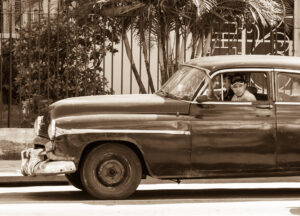 The American automobiles around the streets were remnants of the fifties. They had become a tourist attraction. We were driven about in a sky blue Ford Mercury, but mostly we bussed around the various locations to see a variety of health facilities in what appeared to be a school bus.
The American automobiles around the streets were remnants of the fifties. They had become a tourist attraction. We were driven about in a sky blue Ford Mercury, but mostly we bussed around the various locations to see a variety of health facilities in what appeared to be a school bus.
The hospitals reminded me of the country hospitals that I had known in the early part of my medical career, just shorn of the technology which I had come to accept as de rigeur. Their pitch to us was laced with propaganda, matter-of-the-fact, no overt hostility to the Americans, mildly surprised to find a couple of Australians in their midst. This was the home of the the barefoot doctor!
One of the local leaders of our delegation told us how her parents had been part of the communist ethos whereby if you were a labourer on building a block of apartments you would be given one. The problem now, however, was that these small one or two bedroom apartments that housed a small family 40 years before, increasingly were housing two to three generations because housing development under the communist regime had not sustained the increasing need for new housing.
The visit had its ups and down. I was laid low for a couple of days with severe food poisoning, which I suspect came from a fish lunch. I was the only one to be poisoned, so I wondered whether I had been a mistaken target for some dastardly deed. Anyway, it reduced the amount of health facilities I had to visit, so there is always a silver lining. Nevertheless, I did avoid being a customer of the Cuban health system, whatever conclusion can be drawn from that.
Havana’s old city was just what you would expect – the picture postcard vista of the Old Spanish American town. At the dinner when I was serenaded for my birthday, she could have been a sultry Lena Horne look-alike stepped out of a 40s movie, and I trying to be cool as she fixed me with her gaze as she sang. But I don’t do nonchalance well.
Wandering into the Nacional Hotel with all the memorabilia of its heyday strewn around, it was easy to be transported back to that era of Clark Gable and Ernest Hemingway. This was the place in Havana where the movie stars flocked because you could drink, you could gamble, you could frolic with money and in so doing could escape the Puritan eye of their American forefathers. Built on a hill overlooking the sea, with a large lawn, the hotel was not difficult to imagine being in one’s tux strolling out in the evening, cocktail in hand, and watching the lights of the hotel skip along the sea swell.
In 1959 this romance was transferred to revolution, but that has long gone and given way to an ageing, ideologically-driven nation increasingly having difficulty paying its way.
Yet in 2011 I suspect there was enough residual nostalgia and reverence, because of the Castros. They epitomised this romantic image of revolution, where the face of Che Guevara was still everywhere.
In a restaurant where we went for lunch I noted a stack of those T-shirts with Guevara printed on the front. Red starred berets were on sale. I went across to the stand where they had been stocked, a much better word than displayed because there was nobody trying to hawk them. I extracted a red and black one with the imprint of Che on the front – and a beret. Once the others in the party saw what I done, they flocked over, and then there were none.
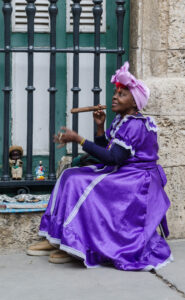 Needless to say, this group of health professionals had a number, somewhat incongruously, who went off to buy that other commodity for which Cuba is famous – the cigar. Together with Cuban rum, cigars were still a prohibited import into the USA. There were constant warnings that the customs would be there, searching for any sign of Cuban tobacco leaf or the smell of rum. The funny thing was when we arrived back in Miami at the end of the week, there was not a customs officer in sight. Irony on a number of levels.
Needless to say, this group of health professionals had a number, somewhat incongruously, who went off to buy that other commodity for which Cuba is famous – the cigar. Together with Cuban rum, cigars were still a prohibited import into the USA. There were constant warnings that the customs would be there, searching for any sign of Cuban tobacco leaf or the smell of rum. The funny thing was when we arrived back in Miami at the end of the week, there was not a customs officer in sight. Irony on a number of levels.
The footpath along the sea wall provided a wide vista of the foreshore, although you had to be wary of the rogue wave breaching the wall and giving one of good dousing. Here was another reminder of the American presence. In Havana, walking along the seafront, there was this large anonymous building surrounded by a formidable fence. This building was the one which later achieved a degree of notoriety when the embassy staff were subject to microwave radiation during 2016-2017. They complained of symptoms ranging from dizziness, loss of balance, hearing loss, anxiety and something they described as “cognitive fog”. It became known as “Havana syndrome”. It coincided with the time of Trump, who predictably re-imposed sanctions on Cuba.
The memories of Cuba seem a long time go. I suppose being on an American delegation we could watch the interactions. Apart from the irascible “hero of the revolution”, the reception for the Americans was warm; whether any thing long term developed from the trip I doubt it. The problem is that the Caribbean is a beautiful area contaminated by European adventurism. The Cubans had freed themselves from that, at a price, but still exhibited a warmth in welcoming these health professionals without any feeling that we were meeting a set of selected ideologues spouting inanities.
You get to know when you are on a mushroom tour. Cuba was not one of these . I like to believe in the musicians of the Buena Vista Social Club – the optimism and exuberance of these old guys, could not have come from a totally dark past.
As one writer put it recently: “The musicians you hear on the street corners of Old Havana aren’t playing current styles like reggaeton, or hip-hop, or even salsa. They’re playing music by the Buena Vista Social Club.” As it was when we visited. Thank God, Trump did not destroy that; I do hope that element does survive amid the rioting of a youth that has no memory of the 26th of July.
A Precautionary Tale yet One of Hope
Below is an edited article from The Washington Post this week. It is at a time when some Australian journalists seem to be advocating “eating our young”. In other words, singling out ATAGI is not particularly productive. It gave the typical conservative advice, narrowly based and what they did not say was based on the wrong assumption. There was insufficient Pfizer vaccine to allow for unfettered choice.
Australia is in a time of rationing, not seen since World War 11, and therefore if ATAGI gave advice related to a time of cornucopia rather than rationing, the decision should have been the role of government, rather deflect on the meaningless “we rely on medical advice”. In any event, the government has changed the chair of the ATAGI – just one way of defining scapegoat.

Meanwhile…
Kim Marin and her 12-year-old daughter, Kate, isolate at home Friday in Fairfax County. Both are fully vaccinated and recently tested positive for the coronavirus.
Kim Marin planned to spend her 51st birthday on Friday eating a cherry pie made by her 80-year-old mother and 12-year-old daughter. But Marin and her daughter, Kate, began feeling ill earlier this week. On Wednesday the pair, who are fully vaccinated and live in Fairfax County, tested positive for the coronavirus.
At first, it seemed like they just had a bad cold: They were coughing, sneezing, and feeling achy. But their symptoms got progressively worse. Kate developed a bad sore throat and the two were outright exhausted.
“Because my daughter and I were feeling so badly, I just thought, let’s go to urgent care and while we’re here, they should probably test us [for the coronavirus],” Marin said. “We both got tested and we were shocked. We both were first in line to get vaccinated when we were able to.”
Breakthrough cases are rare. Just 0.031 percent of the 4.5 million fully vaccinated people in Virginia have developed covid-19, according to the state’s dashboard. Just 0.05 percent of the more than 375,000 fully vaccinated people in the District of Columbia have tested positive. And out of the 3.5 million people who have been fully vaccinated in Maryland, just 2,493 have tested positive, according to state officials.
“I think the thing that’s so startling is that we have been really sick,” Marin said. “The messaging has been that cases like ours should be pretty mild. . . We’re not in the hospital, so we’re so grateful for that. But it still has not been an easy week.”
Marin has been fully vaccinated with the Pfizer vaccine since mid-April, and Kate, also with the Pfizer vaccine, since mid-June. Both Marin’s 48-year-old husband and 14-year-old son, who are both fully vaccinated, tested negative Friday.
Marin said she isn’t quite sure how she and her daughter contracted the virus. Her family still frequently wears masks when going to the grocery store, only having walked into a store a few times without one. Health officials have yet to contact Marin and her daughter for contact tracing, she said. But Marin immediately notified her doctor and the family’s paediatrician about their results. Marin said her nurse told her she was getting more of these calls from vaccinated people, and told her to go back to wearing masks full time.
Officials in the Washington region haven’t moved to reinstate mask restrictions.
The delta variant has already become the dominant strain in Maryland and Virginia; it makes up 1 percent of cases, but officials are working to increase their sequencing of specimens. While the risk of contracting the virus for vaccinated people is still low, it has increased compared to earlier strains.
The delta variant is much more infectious than the alpha variant was, and than the wild type was before that, and so a better understanding really is — in the short term, in the past 30 days — what proportion of new cases were in individuals who are vaccinated, because that gives a better picture today of what the risk is today to any vaccinated person.
Los Angeles County officials, for example, look at breakthrough cases in a time-bound way and are able to say, for instance, that 20 percent of the coronavirus cases in June in the county were among vaccinated people. While time-bound figures can help show how exactly the risk for vaccinated people is increasing, officials say it’s still important to note that the risk level for unvaccinated people is higher and increasing, too.
For her part, Marin plans to go back to taking the precautions she followed in the spring. She has young nephews whom she doesn’t plan to be around without a mask anymore. And she no longer plans to go maskless in any public spaces. But she’s still grateful for the vaccines has made that possible.
“I’m struck by how much worse it could have been,” Marin said. “While it’s been very unpleasant, and scary, we have not felt like it was life-threatening.”
Mouse Whisper
This involves two doctors who were discussing the fact that one of them had been able to diagnose a middle-aged man, whose heart condition had baffled a variety of clinicians. The first doctor asked how the other had come to the diagnosis of cardiac amyloidosis.
The second replied by saying he used the Uncle Bert Sign. “If I described Uncle Bert to you and sent you out into a crowd to find him, you’d probably fail. But if you’d ever seen Uncle Bert” — he snapped his fingers — “no problem. You’d find him in a second. It’s all about recognition.”
Heard it before, Topo?
